Your cart is currently empty!
Tag: Featured

Eight Tips for Getting the Most Out of Apple’s Focus Modes
Apple’s “Focus” feature is a powerful tool for cutting down on distractions and interruptions on a per-task basis, but setting up different Focus options takes some time investment and tinkering because there are a lot of features available. We’ve rounded up a handful of suggestions that may help you get more out of Focus.

Managing Focus Modes
You’ll find the Focus section in the Settings app. Apple has some pre-made Focus options, but you can create custom modes by tapping on the “+” button in the upper right corner. Custom Focus modes are a blank slate, so you can choose your own name, icon, and capabilities.
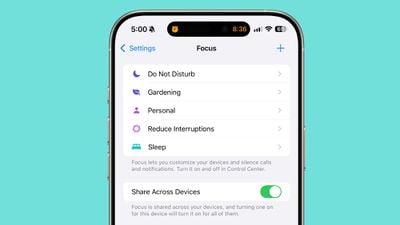

We’ll go through some of the useful options below, but it is worth tapping through each section to see which functions will work best for your needs.Silence or Unsilence Specific People
If you’re at work and want to silence personal text messages and calls to cut down on distractions, or if you’re at home and want to shut out work messages, the best way to do so is to use the people muting feature.
There are two options. You can silence notifications from a list of people that you select, allowing all others, or you can allow notifications from everyone except for the people that you pick.
With either option, you have to add people one by one, and there’s no intelligent grouping option that will do it for you. It can take some time, depending on what you want to set up. It’s best to choose the option that has the least amount of tapping, so if you’re at work, you may want to select colleagues, important family members, and your boss, while turning off notifications from everyone else.
At home, it might make sense to allow all of your notifications to come through except for people from work.
When you “silence” a person with Focus, you still receive the text message, it’s just tucked away in a specific section on your Lock Screen and you don’t get an audible or haptic ping when the notification comes in.
Select Apps
Similar to silencing people, you can silence or allow notifications from apps for specific Focus modes. You have the same options as you do with people, and Apple will suggest some of your most used apps.
Given that most of us have a whole ton of apps installed, it’s almost always best to use the “Allow Notifications From” feature to choose apps that you want to hear from, but there are exceptions. For a home-based Focus mode, if you have a few apps like Mail and Slack that are noisy, you can mute just those while allowing all other apps.
Carefully choosing the apps that can ping you in each Focus mode is one of the best ways to manage distractions.
Apple’s pre-configured Do Not Disturb mode silences all apps and people by default if you just want to turn off everything with no hassle.
Using Reduce Interruptions
If you have a device that supports Apple Intelligence, you can turn on a pre-configured “Reduce Interruptions” Focus. It blocks all notifications except for those that Apple Intelligence determines are “priority notifications.”
Reduce Interruptions can be customized to expressly allow or silence specific apps and people, and using this feature will override AI-based sorting for those selections. Reduce Interruptions can be a good compromise between all notifications on and Do Not Disturb.
Intelligent Breakthrough and Silencing
The main feature in Reduce Interruptions, Intelligent Breakthrough and Silencing, can actually be applied to any of your custom Focus modes.
Limit App Access with Custom Home Screens
It takes a few extra steps, but Focus modes can be set up to only show you specific apps. Under the Customize Screens option, you can choose a Home Screen page to show when a Focus mode is active.
If you want to only see work apps while at work, you can set up a page with your work apps and then choose that as your main screen for the Focus mode. You can select all of the apps that you want to see, and others will be hidden from view while the Focus is active. Note that the dock stays available regardless with your selected apps, and you can also edit your custom Home Screen later while the Focus is on if you need to make tweaks.
While in a Focus mode, you can still open other apps by swiping over to the App Library, but by default, distractions are hidden from view.
This can be a good way to shut out distracting games and social media apps at certain times of the day as an alternative to Screen Time.
Add Focus Filters
With Focus Filters, you can really drill down into what’s available in each of your Focus modes. If you have a work email inbox and a personal email inbox in Mail, you can use filters to block out your personal inbox when you’re at work, or your work inbox when you’re at home.
There are filters for apps where you might want to split out different accounts, like Safari, Calendar, and Messages. You can filter for specific conversations in Messages, a specific Calendar, or a Tab Group. There are filters for third-party apps, too.
Focus Modes can be linked to system settings that include Always On Display, Dark Mode, Low Power Mode, and Silent Mode, so you can do things like set up a work focus that always activates Silent Mode, or set up a Focus that blocks out all notifications and turns on Low Power Mode.
Scheduling
All Focus modes can be set to activate automatically, so that once you configure them, you don’t need to manually turn them on and off. You can activate Focus modes by time of day, your location, or when an app is opened up.
If you want your Work focus on from 9:00 a.m. to 5:00 p.m., that’s an option, but you could also set it up to turn on when you arrive at a specific location or when you open up an app like Slack.
When manually activating a Focus from Control Center, you can select options that will turn it on for an hour, until the evening (or morning), or until you leave a specific location.
Special Focus Modes
Apple has several pre-configured Focus modes that you can’t replicate with custom modes because there are unique activation features included.
Sleep
The Sleep Focus is a unique one, because it is tied to Apple Watch sleep tracking. The schedule that you set up for the Sleep Focus determines when your watch tracks your sleep, when your alarm goes off in the morning, and when you get a “Wind Down” notification to prepare for bed.
This is a Focus that’s set up when you enable sleep tracking features and set a schedule, but you can edit it like any other Focus to select people and apps that can deliver breakthrough notifications.
Driving
The Driving Focus blocks out all communications by default, and it activates automatically when driving is detected, when your iPhone connects to your car’s Bluetooth, or when CarPlay is activated. It can also be set up to turn on manually, and it can be configured to allow notifications from specific people, but not from apps.
Fitness
The Fitness Focus can be set up to activate automatically when a Workout is started on the Apple Watch.
Mindfulness
The Mindfulness Focus turns on when you start a Mindfulness session on the Apple Watch.
Gaming
The Gaming Focus activates when you connect a Bluetooth-based gaming controller to your iPhone or another device.
Reading and Work
The pre-configured Reading and Work Focus modes have a feature called “Smart Activation” that allows them to turn on at specific times of the day based on your location and app usage.
Both of these modes have no apps or people set up to allow by default, so they still need to be further configured or they will work like Do Not Disturb, shutting out everything. These Focus modes can activate based on your location, so if you’re at work, you can get the Work Focus to come on automatically when you arrive and turn off when you leave.
Alternatively, you can have these modes activate when you open a specific app, like Books.
Unlink Devices
By default, Focuses are shared across all devices where you are signed in to your Apple Account. If you turn on Do Not Disturb on your iPhone, for example, you are also turning it on for your Mac and your Apple Watch.
If you simply want to silence Focus modes on a single device like your iPhone and not your Mac, you need to turn off the Share Across Devices toggle when setting up the Focus.
Unlink iPhone and Apple Watch
On Apple Watch, if you don’t want it to mirror your iPhone Focus mode, you can go to General > Focus > and toggle off “Mirror my iPhone.”
Conclusion
Focus can save you a lot of hassle in the long run, but only if you take the time to set it up properly. It’s definitely worth doing if you want to be able to better compartmentalize your digital experiences, shutting out work at home and removing distractions while working.
If you have tips on getting the most out of the Focus feature, make sure to share them in the comments below.
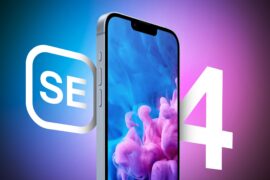
Apple’s Next iPhone SE Launching on Wednesday – Here’s What We Know
Apple CEO Tim Cook teased an Apple announcement that’s coming on Wednesday, February 19, and it’s looking like that mystery announcement will be the next-generation iPhone SE.

We’ve been hearing about the iPhone SE 4 for quite some time now, and we essentially know everything to expect. If you want a sneak peek at what’s coming, read on.Naming
Apple first introduced the iPhone SE in 2016, and the “SE” stands for Special Edition. Apple has used the SE naming for the last three models, but it’s possible that’s going to change this year.
There have been rumors that the new low-cost iPhone could be called the “iPhone 6E” instead of the iPhone SE 4, but the information came from a source without a well-established track record.
The low-cost iPhone will have the same chip as the iPhone 16, along with a few other iPhone 16 features, so it would not be a shock for Apple to give it a new name to better tie it into current flagship models. When announcing the upcoming product launch, Cook also said “get ready to meet the newest member of the family,” which could be a reference to the iPhone 16 family. At the same time, “family” could also just be the iPhone family.
Design
We’re expecting the iPhone SE to have an iPhone 14-style design, with a 6.1-inch display. Its launch will mark the end of smaller iPhones, and 6.1 inches will be the smallest screen size that Apple offers.
While the current iPhone SE is 4.7 inches, the size difference between the 4.7-inch model and the new 6.1-inch model isn’t as extreme as you might think. The updated size will be noticeable, but getting rid of those thick bezels means there’s a limited increase in physical size despite the larger display.


An iPhone SE 4 dummy model
The iPhone SE is 5.45 inches tall and 2.65 inches wide with a thickness of 7.3mm, and the new model will be 5.78 inches tall, 2.82 inches wide, and a thickness of 7.8mm. Weight will increase just an ounce.Apple used to sell a 5.4-inch iPhone “mini,” but it was discontinued after the iPhone 13 mini because it didn’t sell well. In the future, Apple may appease those who want a small iPhone with a clamshell device that folds in half, but rumors suggest that such a device is a year or more off.
If you want to know what the iPhone SE will look like, take a look at the iPhone 14. It’ll have the same general design with an all-display design, aluminum and glass build, mute switch, volume buttons, notch, power button, and 5G antenna/SIM tray. The iPhone SE 4 is expected to have a single-lens rear camera, though, rather than the dual-lens setup of the iPhone 14.
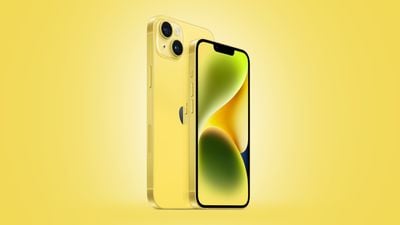

You likely saw early rumors about an Action Button or Camera Control button for the iPhone SE 4 during the rumor cycle, but it sounds like those are not features that are coming to Apple’s low-cost device after all. iPhone SE dummy models have not included an Action button or a Camera Control button, nor have cases designed for the device.Both early iPhone cases and dummy models are often crafted based on supply chain leaks, and they’re usually accurate because there’s a good money in having a case ready to go right when a new device launches.
Display
The iPhone 14 introduced Ceramic Shield, which is stronger than typical smartphone glass and better able to hold up to drops and scratches, and it’s likely the low-cost iPhone will adopt the Ceramic Shield material.
Apple is updating the iPhone SE with an OLED display, which means the end of LCD display technology in the iPhone lineup when the current model is discontinued. LCDs are still used for some Macs and iPads, but the iPhone lineup will be all OLED when the SE 4 launches.


The iPhone 14 had a notch to house the TrueDepth front-facing camera and facial recognition hardware, and the iPhone SE will have the same notch design. There were rumors suggesting Apple could use the Dynamic Island for the iPhone SE, but that’s another feature that looks like it’ll be reserved for the more expensive iPhone options.No More Touch ID
With an all-display design like the iPhone 14, Apple is eliminating Touch ID. When the current-generation iPhone SE is discontinued in favor of the new model, there will be no iPhone with Touch ID in the lineup.


The current iPhone SE
Touch ID is still used for Macs and some iPads, but Apple will transition fully to Face ID for its iPhone models with the iPhone SE 4.There are people who prefer Touch ID to Face ID, but Apple is all-in on facial recognition, and it’s more secure than Touch ID. There’s a less than 1 in 1,000,000 chance that a random person could unlock your iPhone with Face ID, but a 1 in 50,000 chance for Touch ID.
Eliminating the Touch ID home button provides much more viewable screen space, which is a major bonus. Android manufacturers have married large display sizes with fingerprint recognition by putting sensors on the back of their smartphones, but Apple has never adopted that kind of design.
No More Lightning
The iPhone SE will have a USB-C port for charging, with Apple continuing its mission to phase out the Lightning port.


The iPhone SE is one of the last Apple devices that continues to use Lightning, and when Apple discontinues the iPhone 14, which could happen with the iPhone SE launch, Lightning will be eliminated from the iPhone lineup. It’s quite possible the iPhone 14 will be discontinued when the iPhone SE launches because it makes little sense to keep a lower spec iPhone 14 around for $599 when there’s a more powerful iPhone SE available that costs less.MagSafe
The iPhone 14 added support for MagSafe, and since the iPhone SE 4 is using an iPhone 14 design, it will work with MagSafe accessories and will support MagSafe wireless charging. MagSafe is not an option for the current iPhone SE, but MagSafe charging and MagSafe accessories have become an increasingly important part of the Apple ecosystem over the last few years.


A18 Chip and 8GB RAM
Apple plans to equip the iPhone SE 4 with the same A18 chip that’s in the iPhone 16, which means it’s going to have flagship performance at a much more affordable price. The A18 chip will allow it to last for years to come, and it’s going to be the most affordable way to get Apple Intelligence in a smartphone.
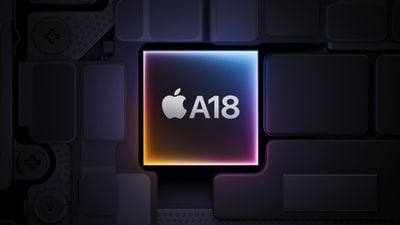

With the A18 chip, the iPhone SE 4 will support Apple Intelligence features, and it’s going to be a huge improvement over the A15 chip in the current iPhone SE. Apple Intelligence requires 8GB RAM, so the new iPhone SE 4 will also have double the RAM of the current model.Storage Space
There’s no concrete storage space rumor, but the rest of Apple’s iPhones start with 128GB of storage, so it’s quite possible we’re going to see the end of the 64GB storage option this year. 64GB is simply not enough storage space, even for a low-cost iPhone.
Camera
The iPhone SE could get the same 48-megapixel Wide lens that’s in the iPhone 16, which will bring a major leap in photo quality compared to the 12-megapixel camera in the iPhone SE 3.


An iPhone SE dummy model
The iPhone SE 4 won’t have a Telephoto lens or an Ultra Wide lens, but if it does indeed use the same Wide lens, it will support next-generation portraits with focus and depth control, the newest photographic styles, and an option to crop in to 2x optical zoom.Connectivity
Apple is going to debut its new in-house modem in the iPhone SE 4, and it’ll give us our first look at how Apple’s modem technology compares to Qualcomm’s modem technology.


Apple’s modem chip won’t support the fastest mmWave 5G speeds, but it will connect to the more widespread 6GHz 5G networks. Apple wants to cut down on its reliance on Qualcomm, and this new modem chip is the first step.We don’t know how much Apple will promote the new modem, but expect to see a range of speed and performance comparisons where the new modem is pitted against Qualcomm’s current iPhone 16 modem.
Emergency SOS via Satellite and Crash Detection
This is speculation, but with the iPhone 14, Apple added a Crash Detection feature that alerts emergency services if you’re in a car accident. It’s an important safety feature that’s likely to be included in the iPhone SE 4.


The iPhone 14 and later also support Emergency SOS via Satellite, and there’s a good chance that’ll be added to the iPhone SE 4 too. Apple loves to promote its safety features, and they can be a major selling point, so we wouldn’t be surprised to see both of these options.Battery Life
Rumors suggest the iPhone SE 4 will have the same battery as the iPhone 14, which means it’ll offer up to 20 hours of video playback, up to 16 hours of streaming video, and up to 80 hours of audio playback.
There’s quite a bit more space in a 6.1-inch device for a battery than there is in a 4.7-inch device, so it should come as no surprise that there will be a major improvement in overall battery life.
The current iPhone SE offers 15 hours of video playback and up to 10 hours of streaming video playback.
Pricing
With higher-end components, the iPhone SE 4 could be more expensive than the current model, but Apple is still aiming for a price point under $500. The iPhone SE 3 is priced starting at $429.
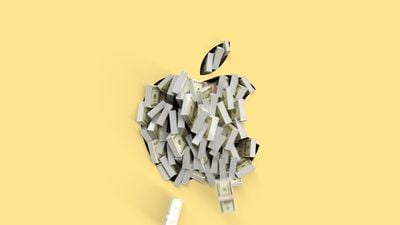

No Event
The iPhone SE 4 is an important new iPhone in Apple’s lineup, but it reuses components from the iPhone 14 and iPhone 16, so it’s not the most exciting device. Apple isn’t going to hold an event to unveil the iPhone SE 4, instead introducing it through a press release and coverage on the Apple website.
Apple did promote the launch early on social media, but without hints about just what product is coming on February 19.
Launch Date
After being introduced on February 19, Apple will likely accept pre-orders for the iPhone SE 4 before launching it a bit later in the month.